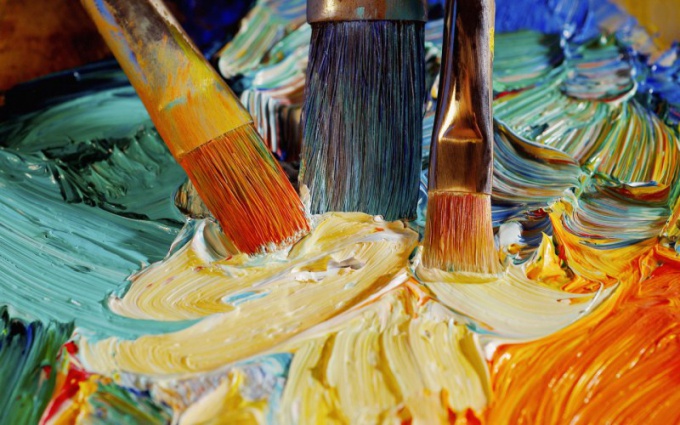You will need
- - oil paint of different colors;
- - brush with natural bristles (bristle and kolinsky);
- - canvas;
- - primer;
- - fine sandpaper;
- - easel;
- - palette;
- - linseed oil;
- - spatula;
- - solvent;
- - turpentine;
- - Lac;
- cloth;
- -a Cup.
Instruction
1
Buy in a specialty store or Department quality oil paint, brushes and other necessary supplies for painting. Pay special attention to paints and brushes are the main tools of the artist. Good brushes retain their original form after each stroke, bad — practically do not bend and do not return to original shape when dipping in oil paint.
2
Stretch canvas on a frame. For oil painting use thick cotton or linen cloth. It is necessary before the work is primed. Apply the first coat horizontally. Smooth the surface with sandpaper and to get rid of small cracks, apply a second vertical layer of primer.
3
Install the canvas on the easel. Pour in a little Cup of turpentine for cleansing during operation of the brushes. After the primer has dried it will take about an hour. Make a sketch of the painting.
4
Wipe the palette linseed oil and wipe dry. Then squeeze her oil paints. Palette while you work you can hold in your hand or place it next.
5
Mix the linseed oil with dark oil paints to use for the base of the picture. Enter into the mixture with a palette knife a little thinner. This will give the paint flow and they will fall to the canvas more evenly.
6
Working on the painting, apply an oil paint neat strokes. If your work is high volume, then paint with a bristle brush. Separate sections with a thin portrayal of complete calico tassels.
7
Correct mistakes and inaccuracies in the painting, wiping the paint with a palette knife and using a piece of cloth soaked with turpentine. Then treat the area with sandpaper and moisten literally one drop of linseed oil.
8
After finishing work wipe the palette knife and the brush with a rag. Thoroughly rinse the brush in solvent, just don't leave them in it for long. Remove the paint from the palette, wipe it with linseed oil and wipe dry.
9
Dry the finished painting vertically on an easel. For complete drying of oil paints will require three days.
10
After painting, apply a coat of varnish damanskogo. It will help to seal in color and protect the surface from cracking.
11
For the final varnishing of the painting, apply two coats of varnish. Let the first layer dry, it will take about a night and apply the second.
Note
To draw on top of the last layer of lacquer is impossible. The surface will crack. Therefore to sign their work before applying the last coat of varnish.
Useful advice
If you're using unprimed canvas, it must be pre-applied to fabric hide glue for extra coverage.
The layers of oil paint on the picture should be the same or each subsequent thicker than the previous one. Otherwise, the surface is deformed.
The layers of oil paint on the picture should be the same or each subsequent thicker than the previous one. Otherwise, the surface is deformed.

